They’re Not the Villains You Think

Sharks carry a reputation that Hollywood helped write, but the truth is softer than the fear they inspire. They kill fewer people worldwide each year than coconuts or vending machines, which is not the story most people expect. With more than 500 species, only a handful show interest in humans, and even then, encounters are rare. Seeing them as they are means learning their habits and understanding their role in the ocean. Once you replace fear with respect, swimming with them becomes less about surviving danger and more about appreciating creatures that simply want to live undisturbed.
Don’t Dive at Dusk or Dawn
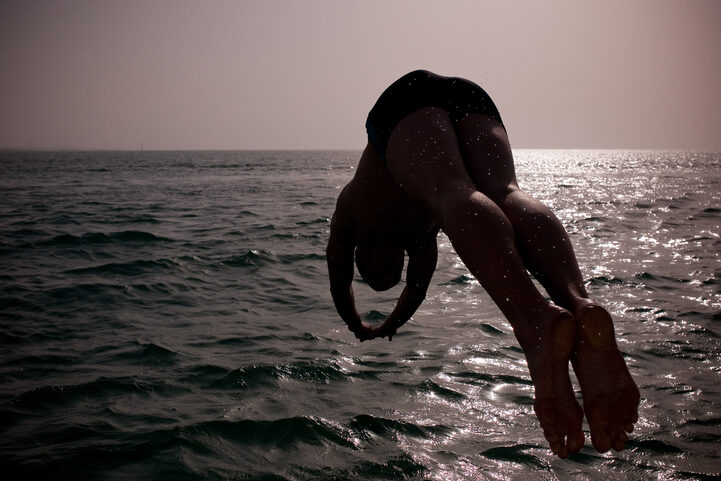
The sea looks calm in the early morning and late evening, but those are prime feeding times for many predators. Sharks use the low light to sneak up on fish, seals, and other prey, which makes a human silhouette easier to mistake. Your safest bet is sticking to midday hours when visibility is clear, giving both you and the shark a better chance at recognition. Avoiding the twilight zone is less about giving in to fear and more about keeping the ocean encounter fair, where you are seen for what you are and not mistaken for something else.
Watch the Water for Clues
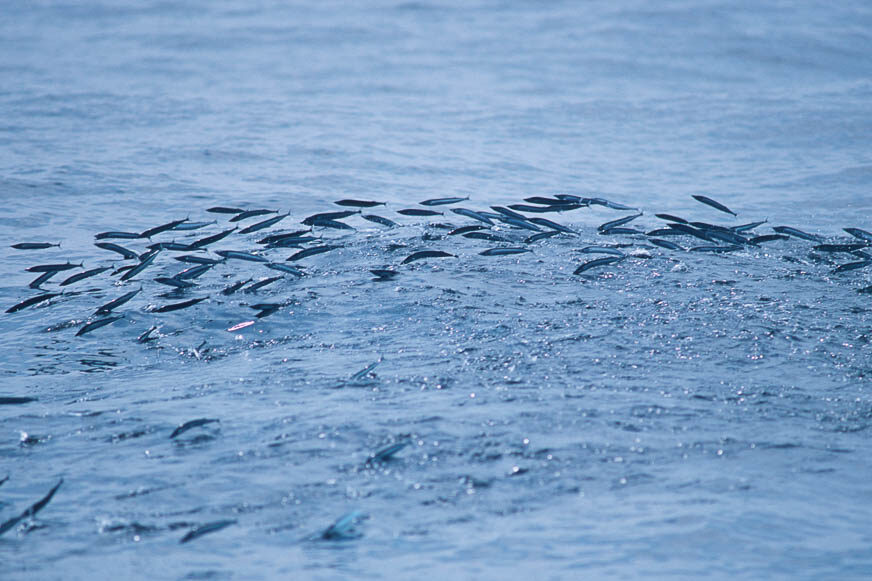
The ocean gives away secrets if you look closely. When baitfish scatter, seabirds dive suddenly, or currents shift in strange ways, it often signals a predator moving nearby. Even floating scraps or slicks on the surface can tell part of the story. These are signs that should not stir panic but awareness. If you notice them, calmly make your way back to shore or the boat. It is not about fleeing, but about respecting the chain of events that the sea is unfolding around you, and stepping aside when the signs say another hunter is close.
Know the Warning Signs
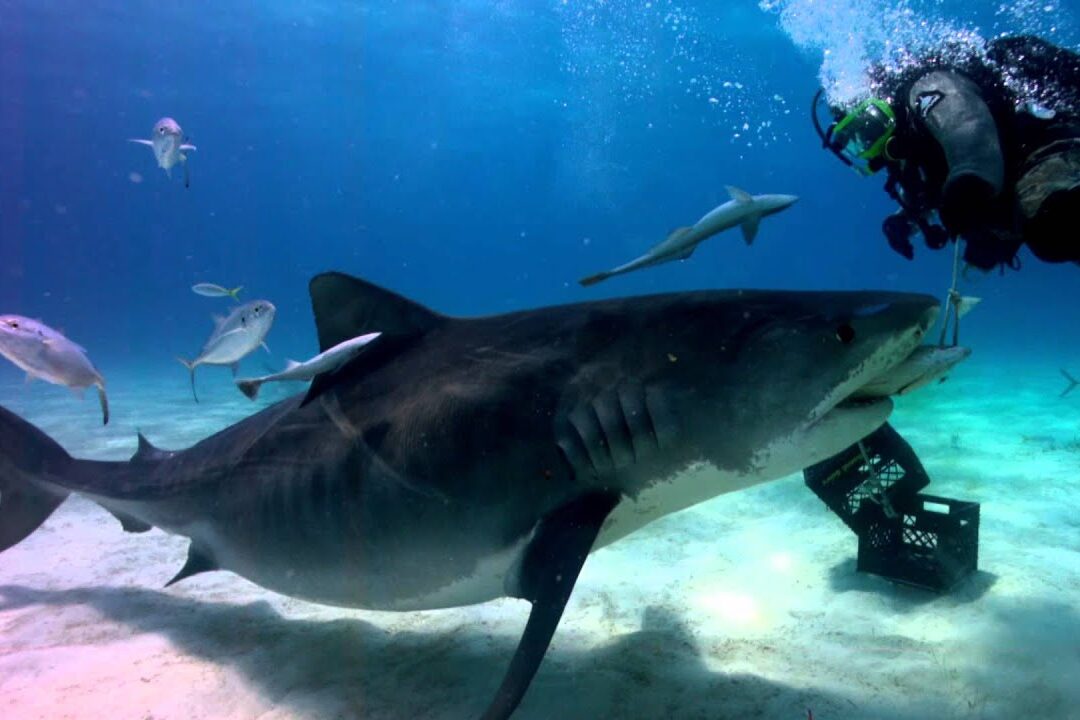
Sharks, like most animals, use body language to speak long before they act. A stiffened body, sharp jerks, arched backs, or fins pointed downward can all reveal agitation. This is not a cue to panic but a signal to respect the space. Back away slowly, avoid splashing, and show you understand the message. Many divers have learned that calm recognition often eases tension. Sharks are not unpredictable monsters; they communicate when they feel crowded. By reading these signals, you can share the water without misunderstanding, proving that listening to nature is as important as staying brave.
Stay Calm and Keep Eye Contact

Fear makes people thrash, but thrashing is what prey does when cornered. That is why the best response to a nearby shark is the opposite of panic. Slow, steady movements keep you from resembling food. Holding eye contact, though it may feel daunting, tells the shark you are aware. Many divers describe it as a silent acknowledgment, where the shark senses confidence instead of weakness. The stillness keeps instincts balanced, and the eye contact sets the tone for respect. It turns a frightening moment into one of quiet understanding, and in most cases, the shark simply moves along.
Let Them Control the Encounter

Sharks are curious creatures, and sometimes they circle or pass just to take a closer look. In those moments, it is tempting to lean forward or swim toward them, but restraint is wiser. Letting them decide how close to come keeps the encounter safe and authentic. When you hold your ground without blocking or chasing, the shark’s curiosity often fades into calm acceptance. The beauty of this approach is that it allows both you and the shark to remain comfortable. What could have been tense becomes natural, and often, the shark chooses to drift peacefully past you.
Don’t Touch or Grab

It might seem harmless to reach out toward a shark gliding near, but it is never a safe idea. Their skin is rough with small, tooth-like scales that can cut human skin, and the animal itself may respond unpredictably. Even the most gentle species are wild creatures that value their freedom. Touching or grabbing can turn curiosity into defense, and that is a risk that spoils the moment. Admiring from a respectful distance is always better. You gain a memory without injury, and the shark continues undisturbed, free to move with the dignity it deserves.
Keep a Pole or Camera Housing Handy
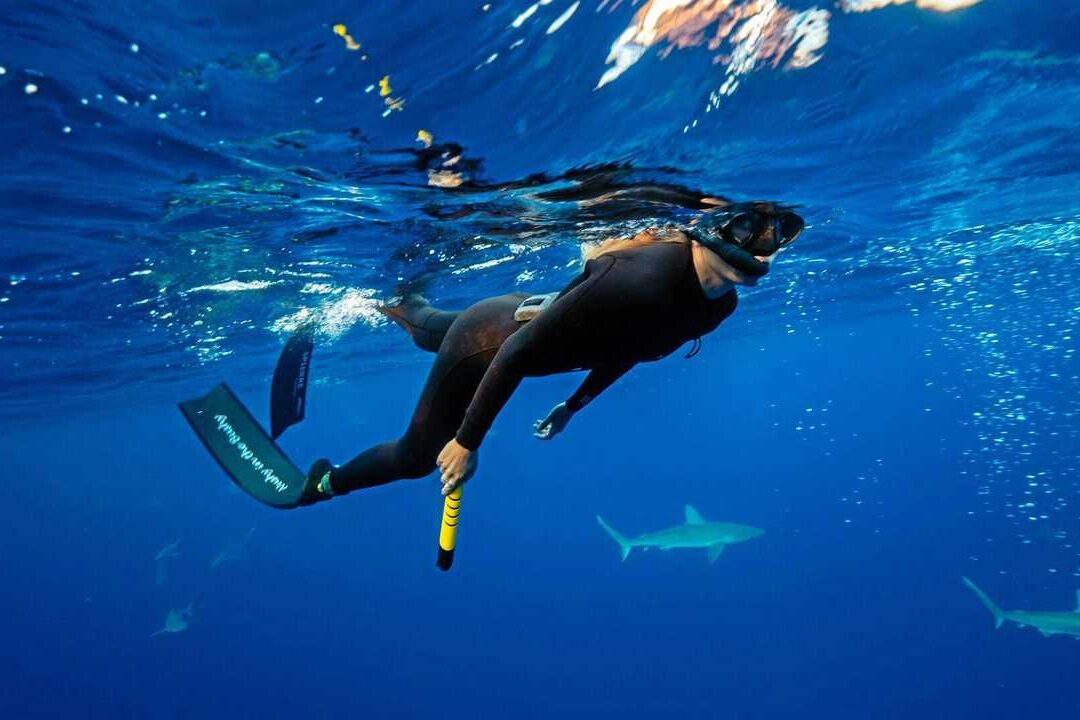
Professional divers often bring along a simple tool, like a pole or camera rig, not as a weapon but as a boundary. If a shark swims too close, gently redirecting it with an object keeps space without escalating the encounter. It acts like an extension of yourself, a respectful way to guide distance while avoiding contact. The tool is less about fear and more about preparedness, giving you a sense of calm control. With that, you maintain composure, and the shark keeps its comfort. Small steps like this make swimming with sharks a safer and more balanced experience.
Avoid Swimming Alone

The ocean always feels less daunting when you are not by yourself. Swimming or diving with a buddy not only gives you reassurance but also creates extra awareness. Two pairs of eyes scan the water better than one, and to sharks, you appear less like isolated prey when in a group. Many experienced divers recommend joining tours led by guides who know the waters, as they understand shark behavior deeply. Company adds security and joy, turning the encounter from intimidating to enriching. Sharing the moment makes it more memorable, and it keeps everyone safer in the water.
Stay Vertical in the Water
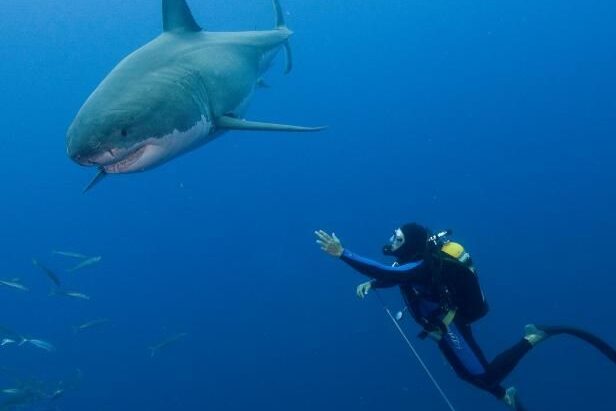
Your posture in the water changes how sharks see you. A horizontal body can resemble common prey like seals or turtles, but standing upright presents something unusual. To sharks, a vertical stance often looks larger and more confident, encouraging them to keep their distance. This simple adjustment shifts the encounter in your favor without requiring force. Many divers find that sharks respond with caution when you appear tall and steady. It is a reminder that even in the ocean, presence matters. By carrying yourself with calm authority, you encourage respect and discourage unwanted curiosity.
Pick the Right Dive Spot
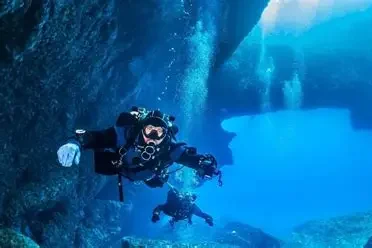
Choosing where to meet sharks matters as much as how you act around them. Some places are known for safe and responsible shark tourism, where experienced crews uphold strict rules to protect both people and animals. Locations like certain Bahamian reefs or South African operators have built reputations on balancing conservation with adventure. By diving in these places, you avoid reckless environments and support communities committed to preserving sharks. It ensures your experience is both safe and meaningful. The ocean becomes more welcoming when you trust the guides and the setting to shape a respectful encounter.
Respect Their Personal Space

Every creature values space, and sharks are no different. Trying to crowd them, block their path, or cut them off for a closer look can provoke defensive reactions. Even shy species retreat when they feel pressured, reminding us that distance builds trust. Leaving a clear path shows respect for their comfort and safety. It also leads to longer, calmer encounters since the shark does not feel the need to flee. By letting them glide freely, you earn the privilege of observing them in their element, turning the moment into one of harmony rather than tension.
Listen to the Experts
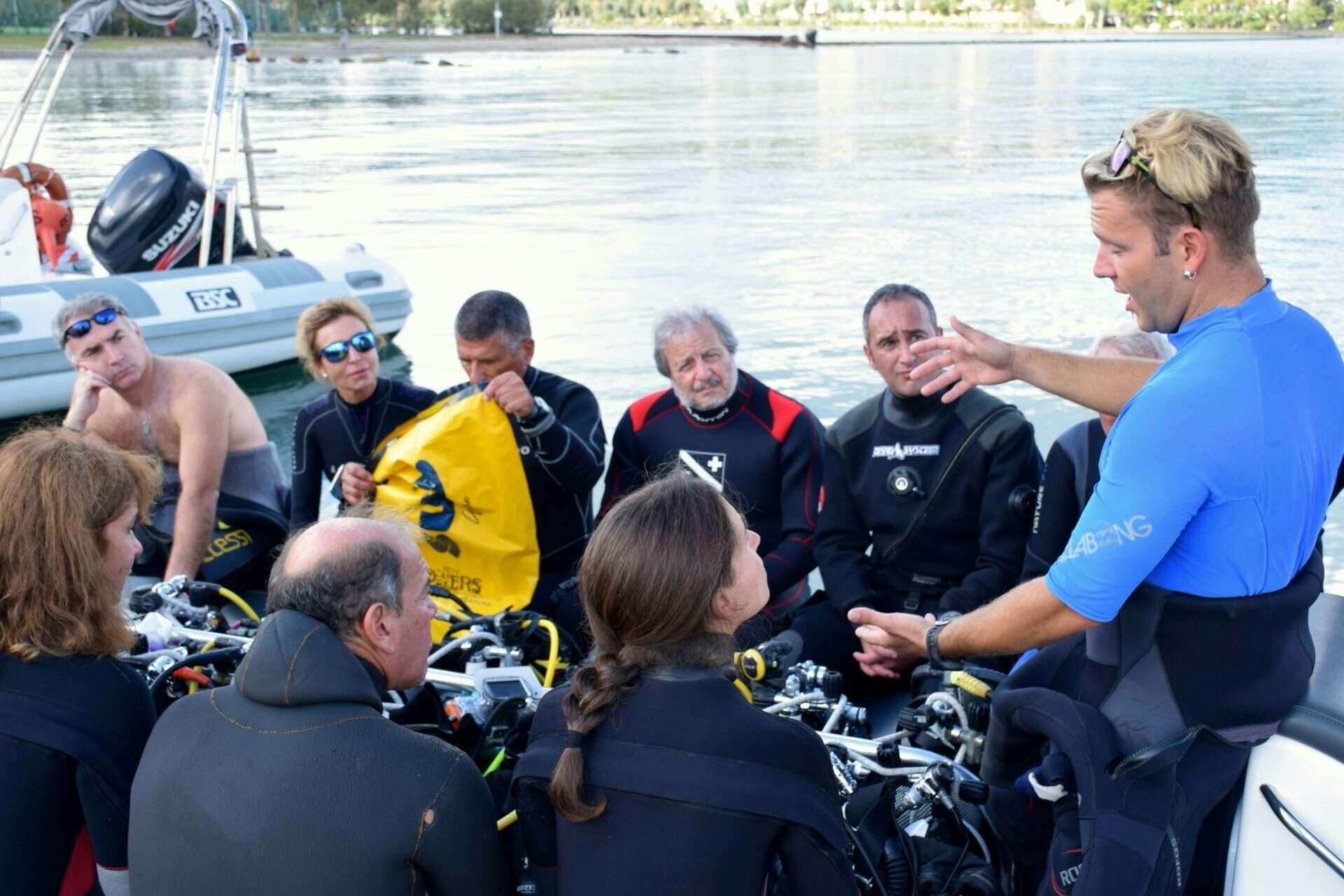
There is wisdom in the voices of those who know the waters best. Dive masters and local guides have years of experience reading shark behavior and understanding the rhythms of the sea. When they recommend waiting, adjusting course, or skipping a dive, it comes from respect for conditions you might not see. Trusting their guidance makes your adventure smoother and safer. It is not a loss of independence but a gain of insight. By listening, you not only protect yourself but also align with the flow of the ocean as it is meant to be experienced.
Remember Who’s at Risk
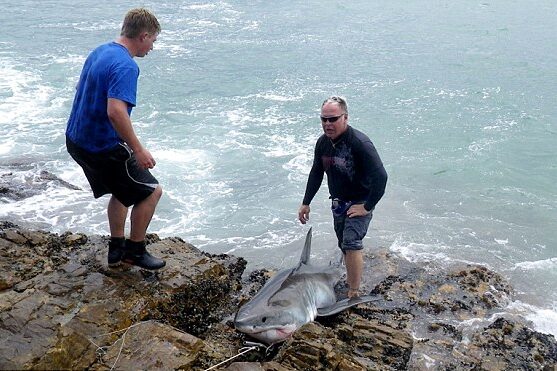
Though people often fear sharks, the greater threat lies with them. Millions are killed each year through fishing and finning, putting entire species at risk of extinction. Their disappearance disrupts the balance of the ocean, weakening ecosystems that humans also rely on. Swimming with sharks is a reminder that they are not ruthless predators, but fragile creatures fighting to survive in a changing world. Seeing them as vulnerable shifts perspective. It changes the encounter from one of fear to one of responsibility, where protecting them becomes as important as protecting yourself in the water.
Leave with Gratitude Not a Souvenir
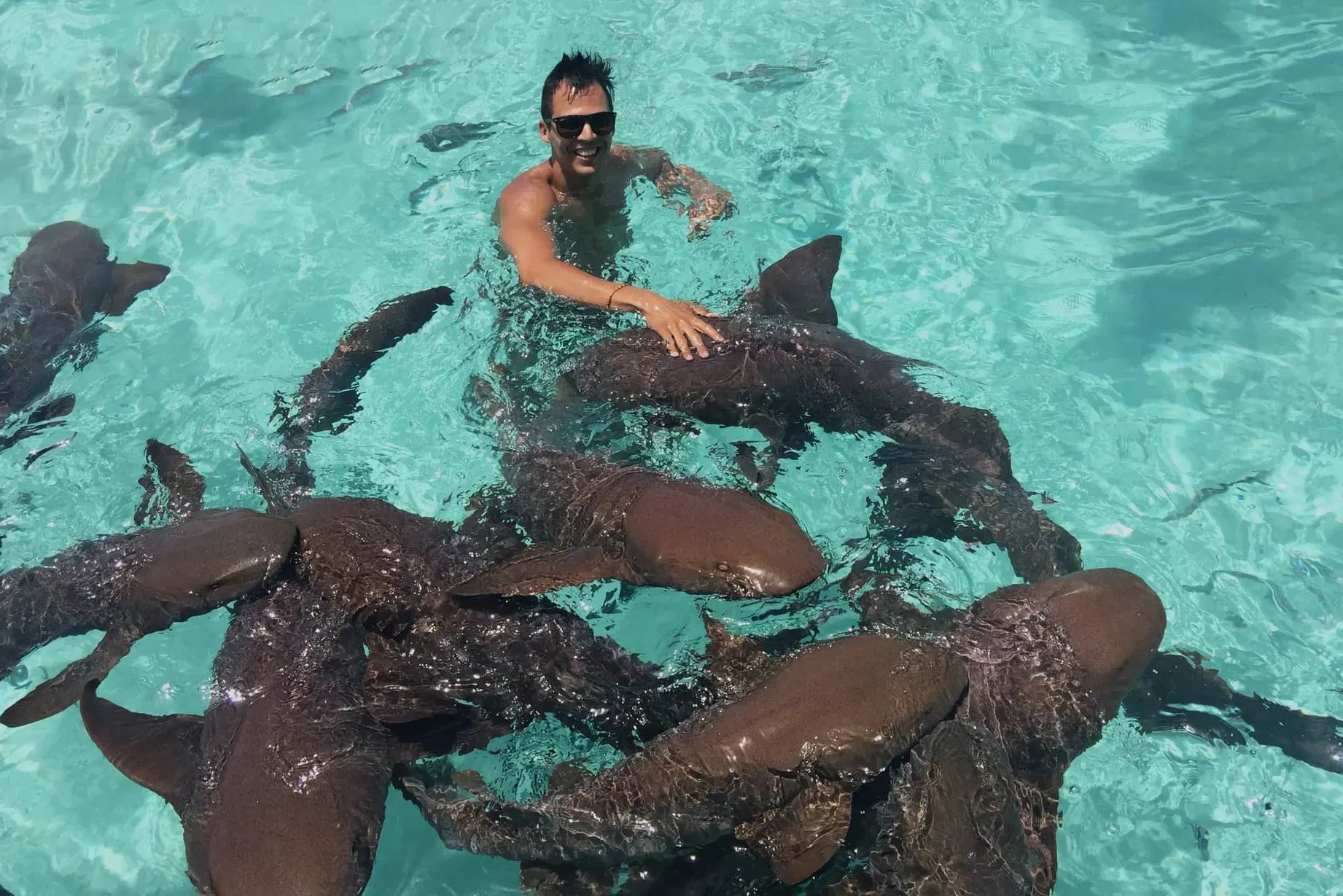
The most valuable thing to bring back from a shark encounter is the memory itself. Taking teeth, fins, or any part of the animal robs both you and the ocean of something irreplaceable. Photos, stories, and the feeling of awe are enough to last a lifetime. Sharks do not belong to us and leaving them unharmed ensures others can meet them too. Gratitude is the best way to end the dive, and it stays with you long after you dry off. Each safe encounter is a privilege, one that inspires respect for the sea and its guardians.
Please remember that we are writers who are passionate about nature, animals, pets, travel, and experiences. We always advise that when doing anything that involves risk, that you get professional opinions and do not only take our word for things. Thanks.
This story How to Swim with Sharks (and Stay in One Piece) was first published on Daily FETCH


